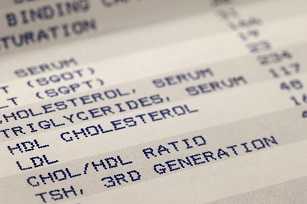LDL and HDL: “Bad” and “Good” Cholesterol

Your health care team may run a blood test called a lipid profile that measures total cholesterol and its individual parts: HDL (good) cholesterol—high-density lipoprotein cholesterol.
Molecules called lipoproteins carry cholesterol in the blood. Two important kinds of lipoproteins are low-density lipoprotein (LDL) and high-density lipoprotein (HDL). When checking LDL and HDL, doctors often include another type of fat called triglycerides.
- Total cholesterol is a measure of the total amount of cholesterol in your blood and is based on the HDL, LDL, and triglycerides numbers.
- LDL cholesterol makes up the majority of the body’s cholesterol. LDL is known as “bad” cholesterol because having high levels can lead to plaque buildup in your arteries and result in heart disease and stroke.
- HDL cholesterol absorbs cholesterol and carries it back to the liver, which flushes it from the body. HDL is known as “good” cholesterol because having high levels can reduce the risk for heart disease and stroke.
- Triglycerides are a type of fat found in your blood that your body uses for energy. The combination of high levels of triglycerides with low HDL cholesterol or high LDL cholesterol can increase your risk for heart attack and stroke.
Know Your Risk
Your health care team can do a simple blood test to check your cholesterol levels. The test is called a lipid profile. The test measures several kinds of total cholesterol and its individual parts including triglycerides. Some doctors do another blood test that just checks total and HDL cholesterol.
Whether your lipid levels require treatment is not solely based on your lipid profile numbers. Your primary care provider will look at these numbers, and your other risk factors, to determine your overall risk for heart disease and help decide if you need treatment.
There are no signs or symptoms of high LDL cholesterol. That is why it’s so important to get your cholesterol checked. Talk to your doctor about what your numbers mean for you.
Who needs to get their cholesterol checked?
Cholesterol is something that needs to be monitored just like blood pressure. Talk to your health care team about what’s best for you. All adults, aged 20 or older, need to get their cholesterol checked.
If you are 20 years or older and have not been diagnosed with heart disease, it is recommended that your cholesterol be checked every 5 years. Some people need to get their cholesterol checked more often.1
All children and adolescents should have their cholesterol monitored at least once between the ages of 9 and 11 years, and again between ages 17 and 21 years.2
Lowering Cholesterol
Knowing your cholesterol levels together with other factors, such age, gender, race/ethnicity, smoking status, and blood pressure, will help your health care team decide whether you should take cholesterol-lowering medication to help reduce your risk for heart disease and stroke.
References
- HealthFinder.gov. Get Your Cholesterol Checked. U.S. Department of Health and Human Services. Last updated January 26, 2015.
- American Academy of Pediatrics. Physicians Recommend All Children, Ages 9–11, Be Screened for Cholesterol. American Academy of Pediatrics Press Release. 2011.
- Page last reviewed: March 16, 2015
- Page last updated: March 16, 2015
- Content source:



 ShareCompartir
ShareCompartir